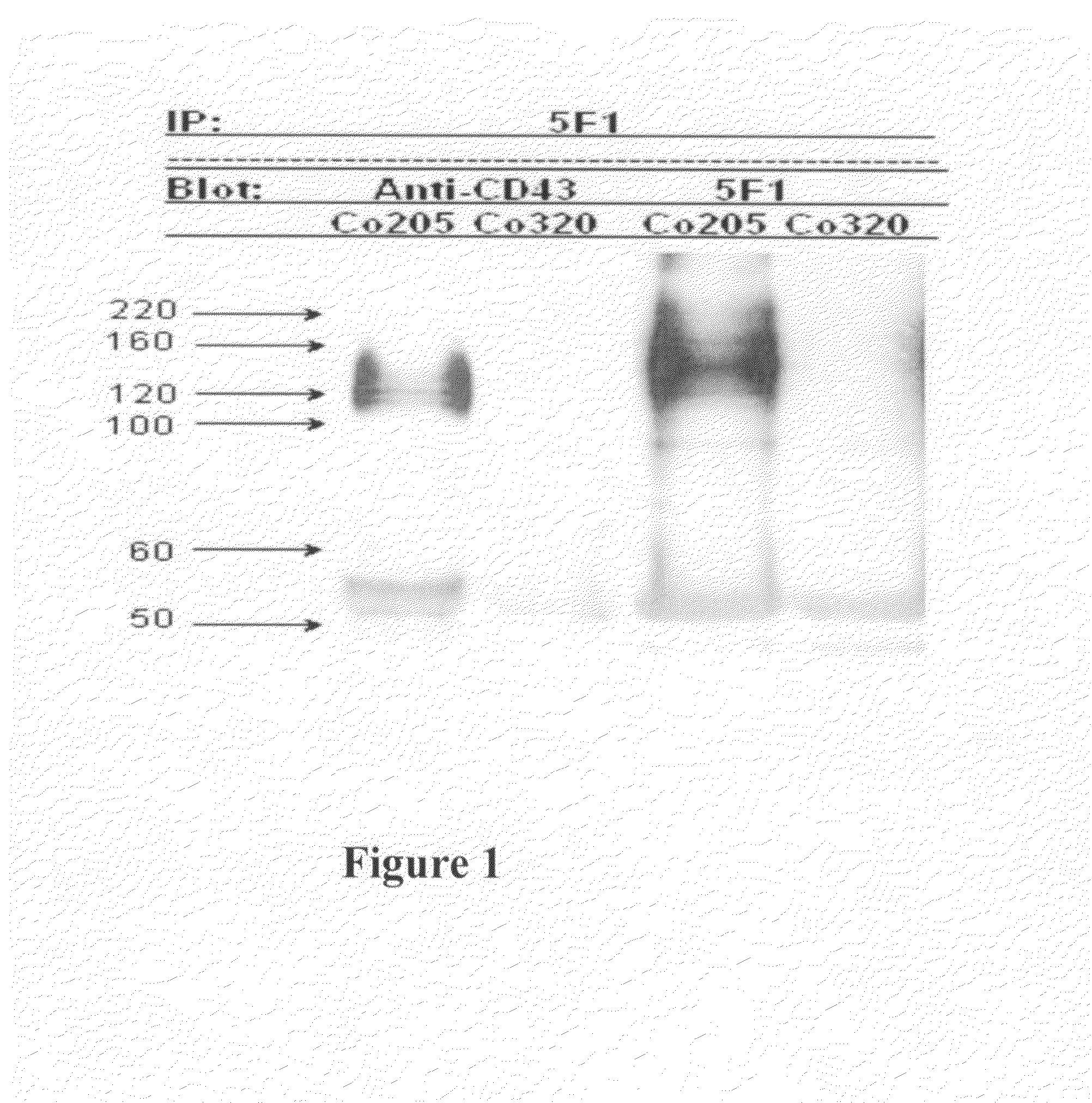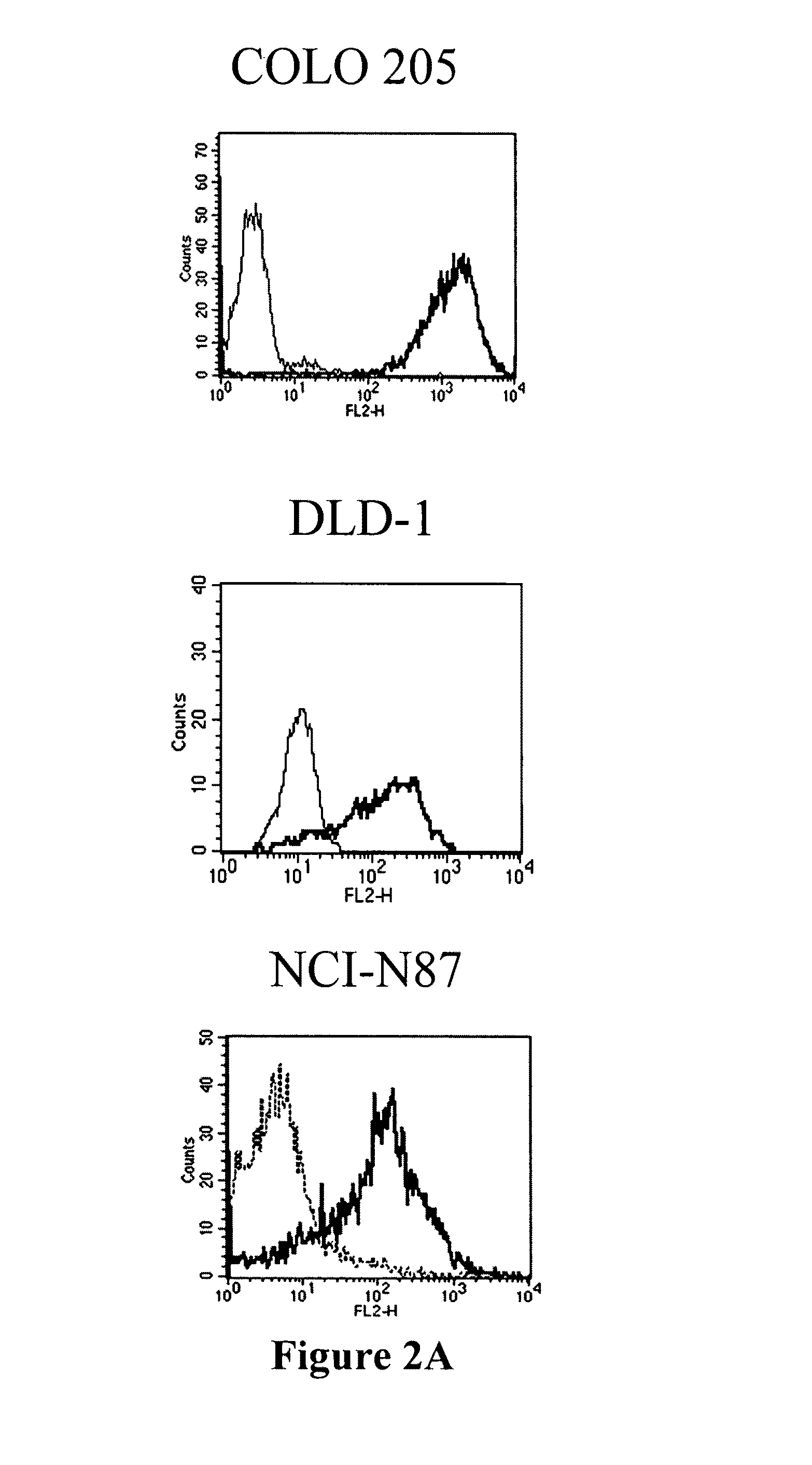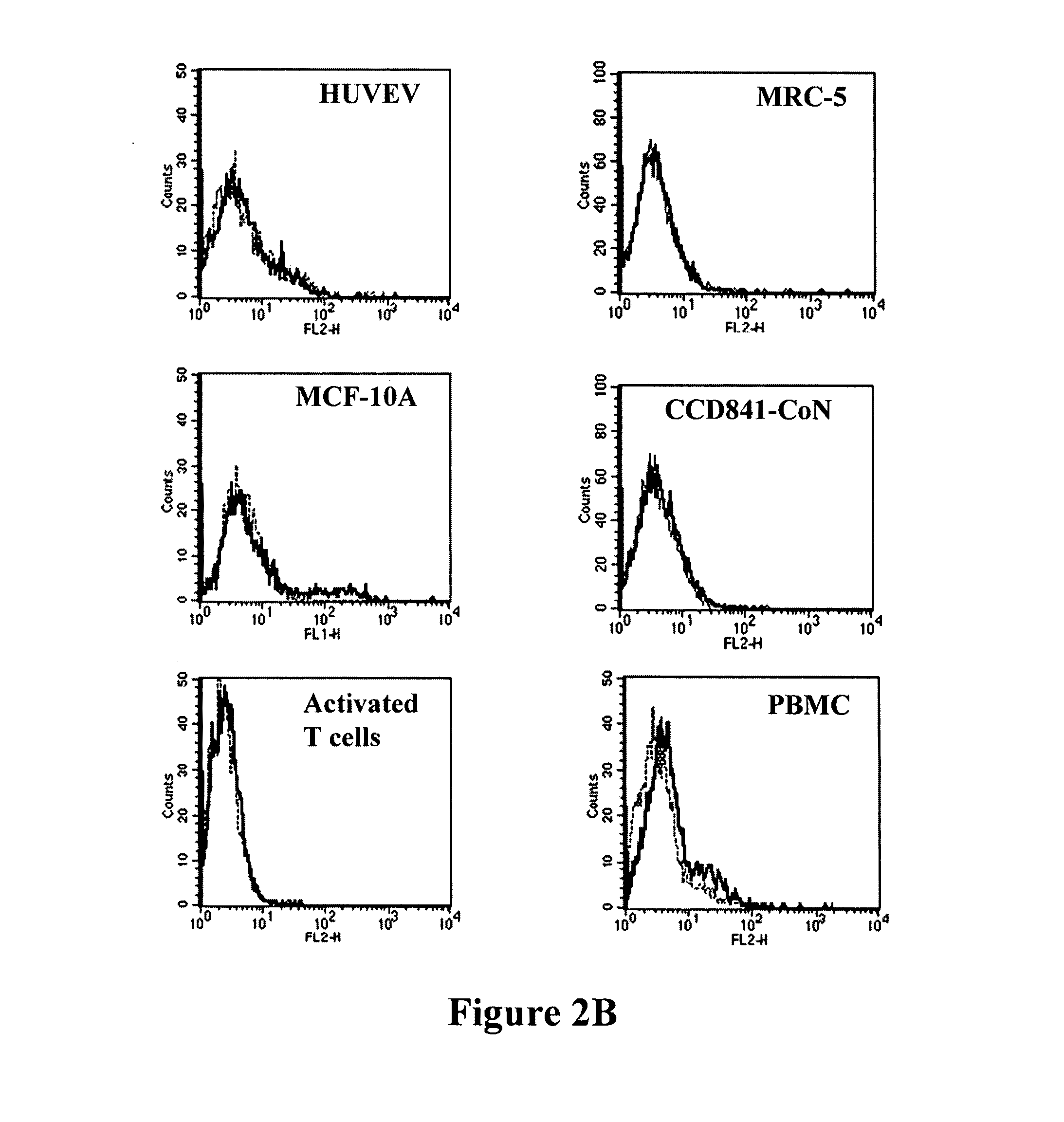Antibodies recognizing a carbohydrate containing epitope on CD-43 and CEA expressed on cancer cells and methods using same
a technology of cd43 and epitope, which is applied in the field of new antibodies, can solve the problems of systemic side effects and inability to use conventional anti-cd43 antibodies as therapeutics for nonhematopoietic tumor cells, and achieve the effect of reducing the number of cancer cells and inhibiting the growth or proliferation of cancer cells
- Summary
- Abstract
- Description
- Claims
- Application Information
AI Technical Summary
Benefits of technology
Problems solved by technology
Method used
Image
Examples
example 1
Generation and Characterization of Monoclonal Antibodies that Specifically Binds to CD43 Expressed on Cancer Cells
Generation of Monoclonal Antibodies
[0201]Human colorectal adenocarcinoma cell line, COLO 205 (ATCC CCL-222), was purchased from Food Industry Research and Development Institute (CCRC 60054), Hsin-chu, Taiwan, and grown in RPMI 1640 medium (GIBCO BRL) with 10% FBS (Hyclone), 100 units / ml of penicillin and 100 μg / ml of streptomycin (GIBCO BRL) at 37° C. in a humidified atmosphere of 5% CO2. A female 8-week Balb / c mouse was immunized three times with 2×107 COLO 205 cells in 500 μl PBS or 10 micro-gram of partial purified protein in CFA every two weeks and finally were given a boost of 2×106 COLO 205 cells or 10 micro-gram of partial purified protein in 200 μl PBS. Five days after the final boost, the spleen cells were fused with X63 myeloma cells. Hybridomas were selected with DMEM supplemented with 10% FBS (Hyclone) and HAT (Hybri-Max™, Sigma H0262, at a final concentratio...
example 2
Apoptotic Activity of Antibodies that Specifically Bind to CD43 Expressed on Cancer Cells
Detection of Apoptosis Induced by 5F1 in COLO 205 Cells by ELISA Assay
[0210]To evaluate the type of cell death induced by 5F1, colorectal cancer cells were grown in culture plates and incubated with or without 5F1. The level of internucleosomal (apoptotic) DNA fragmentation was determined by antibody-mediated capture and detection of cytoplasmic mononucleosome- and oligonucleosome-associated histone-DNA complexes using the Cell Death Detection ELISAPLUS kit (Roche, Cat#1774425). The ELISA assay was performed according to the manufacturer's instruction. Briefly, 1×104 COLO 205 cells were plated in each well of 96-well plates and incubated with 5F1 or 9E10 (an anti-myc antibody) at the concentration of 10 μg / ml, or with medium control. After 6, 24 or 48 hr of incubation at 37° C., cells were washed and incubated with 200 μl of lysis buffer for 30 min. After pelleting nuclei (200×g, 10 min.), 20 μl...
example 3
Inhibition of Cancer Cell Growth by 5F1
5F1 Alone Inhibits the Growth of Cancer Cells
[0220]Colorectal cancer cells (COLO 205), and normal endothelial cells (HUVEC) were seeded and incubated with 5F1 or a control antibody 9E10. Also included were untreated cells as negative controls. Cell survival was evaluated using MTT & WST-1 assays to detect proliferative activity as described herein.
[0221]WST-1 assay is based on the cleavage of the tetrazolium salt WST-1 to formazan by cellular mitochondrial dehydrogenases. The formazan produced can be quantified by spectrophotometer by measuring absorbance at 450 nm. Proliferation of viable cells results in an increase in the overall activity of the enzymes; and decrease in the enzymatic activity indicates cell growth inhibition. Thus, WST-1 assay was used to evaluate the survival rate of tumor cells after 5F1 treatment. Briefly, 4×103 COLO 205 cells in 100 μl culture medium were seeded in 5 duplicates for each treatment in a 96-well culture pla...
PUM
| Property | Measurement | Unit |
|---|---|---|
| dissociation constant | aaaaa | aaaaa |
| dissociation constant | aaaaa | aaaaa |
| dissociation constant | aaaaa | aaaaa |
Abstract
Description
Claims
Application Information
 Login to View More
Login to View More - R&D
- Intellectual Property
- Life Sciences
- Materials
- Tech Scout
- Unparalleled Data Quality
- Higher Quality Content
- 60% Fewer Hallucinations
Browse by: Latest US Patents, China's latest patents, Technical Efficacy Thesaurus, Application Domain, Technology Topic, Popular Technical Reports.
© 2025 PatSnap. All rights reserved.Legal|Privacy policy|Modern Slavery Act Transparency Statement|Sitemap|About US| Contact US: help@patsnap.com



